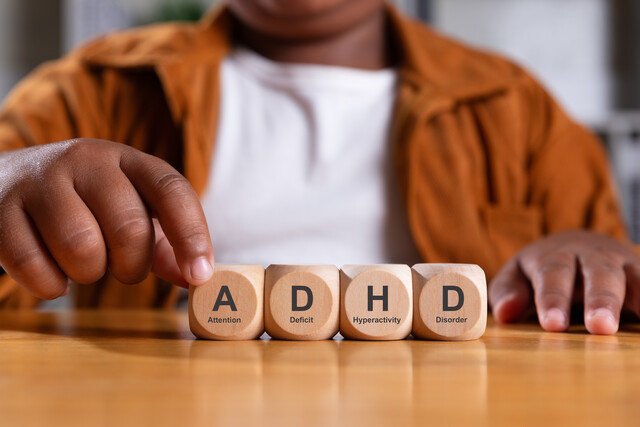Introduction
Cognitive development is a major domain of early childhood development. The term cognition refers to how the mind operates and the study of cognitive development focuses on how the mind thinks and learns during the early years of life1. Examples of cognitive development in childhood include children learning to distinguish between behaviors that will be rewarded, versus those that will be punished by their parents -- and then making decisions (e.g., to follow directions) based on this reasoning. The following article covers the key areas of knowledge one should have in regard to early childhood cognitive development including: major theories of cognitive development and major aspects of cognitive development in early childhood.
Major Theories of Cognitive Development
One major theory of cognitive development is that of psychologist Jean Piaget. This theory is frequently used in psychology and child development. The major premise of Piaget's theory is that children go through various stages of cognitive development, all of which are distinct from one another and influenced by both nature and nurture. These stages are age-based and there are two that apply to early childhood development1:
- Sensorimotor stage (birth to 2 years of age) The major cognitive changes that occur during this stage are:
- Babies progress from relying on innate reflexes to goal-directed, intentional activity.
- Babies focus their attention less on their own body and basic needs, such as hunger, and more toward their environmental surroundings.
- Babies begin to develop object permanence, which is the understanding that an object or person still exists, even if it goes out of their field of vision.
- Babies develop the ability to mentally represent their own actions in their minds.
- Pre-operational stage (2 to 7 years of age) This stage is characterized by children not yet having the ability to use logical reasoning (i.e., perform logical operations) but instead rely on other forms of reasoning that may lead to faulty conclusions; this stage is also characterized by children having the tendency toward egocentrism in which they are incapable of seeing the world from a perspective outside of their own
Another major theory of cognitive development used in the study of early childhood development is psychologist Lev Vygotsky's theory. This theory focuses more on nurture over nature, as it points to sociocultural influences such as the transfer of cultural traditions and language from parents to children for shaping cognitive development1. A major concept of this theory is the zone of proximal development, which is defined as the optimal range of learning and achievement for a given child1. Another major concept is scaffolding, which is defined as the process by which adults assist and support children to help them learn new tasks until they can perform them independently1. Defined stages are not an emphasis of this theory.
Major Aspects of Cognitive Development in Early Childhood
There are many ways that humans process information or perform cognitive tasks. Attention is one major aspect of cognition, and it involves being able to focus on something at the exclusion of other things, called selective attention1. It also involves being able to use this selection and focus on something for a given period of time, called sustained attention1. In the earliest stages of cognitive development, infants are born with the tendency toward novelty (i.e., paying more attention to new things), which aids in rapid learning. They also engage in habituation, which has been defined as the tendency to stop responding to a stimulus that appears repeatedly2. In other words, over time infants pay less and less attention to things they have seen before -- sometimes to the point of having no response to them. There is research evidence showing that habituation can begin occurring as early as before birth among fetuses2.
Attention continues to develop throughout early childhood and by the time they reach school age, around 5, many children have developed the capacity to maintain sustained attention over long periods of time. This serves them well in classroom settings. Some children have such great difficulty maintaining attention that they are diagnosed with attention deficit hyperactivity disorder (ADHD). However, this disorder does not tend to be diagnosed within early childhood, or the first five years of life.
Memory is another major aspect of cognitive development. There is evidence that infants have memory1. However, the phenomenon called infantile amnesia refers to the human tendency to not be able to remember experiences before around the age of 3. Possible explanations for this type of amnesia are that the way the human brain stores memory changes from infancy throughout the rest of development; for instance, it may be difficult to store a memory in verbal terms before the ability to talk or understand language has developed; and that humans lack a sense of self in infancy and therefore cannot form clear stories about experiences that lead to actually remembering experiences1. The capacity to remember increases throughout early childhood through processes like rehearsal, which involves repeating information in order to store it in one's memory -- like singing a song to remember the alphabet -- and developing scripts or mental schemas for how to act in situations that are learned through experience1.
Another key area of cognitive development is called executive function. This is a critical set of cognitive skills that involves a person's working memory, mental flexibility, and self-control3. For example, the ability to switch one's attention between tasks as needed to reach successful completion (called cognitive flexibility), is an important skill included in executive function1. Babies are born with brain architecture that will prepare them to perform executive function, but it must develop over time throughout childhood. The following figure displays the progression of executive function throughout life.
Source: Center on the Developing Child at Harvard University
Major factors that shape the development of executive function in early childhood include relationships (e.g., with parents and teachers), activities (e.g., developmentally-appropriate play time), and places (e.g., safe home environment)3. Executive function may be negatively impacted by things like trauma and stress. The healthy development of executive function can lead to more positive outcomes later in life, like higher school and work achievement3.
Conclusion
Cognitive development is a major domain of early childhood development. Two of the major theories of in this area were developed by psychologists Jean Piaget and Lev Vygotsky. From before birth, throughout the first few years of life, many critical cognitive changes that impact cognition throughout life occur for human beings. Some of the main changes that occur include the development of selected and sustained attention, memory, and executive function.
Introduction
Emotional and social development are major domains of early childhood development. Both are closely linked together and are often referred to as "socio-emotional development." This type of development is critical to human functioning and rooted in the biology of human beings (within the brain's central nervous system) because it aids in survival1. The following section covers the key areas of knowledge one should have in regard to early childhood emotional and social development including the key areas of this type of development: attachment and attachment styles, and ways that this type of development can be supported in early childhood.
Key Areas of Emotional and Social Development
Three major areas have been identified for emotional and social development in early childhood. These include emotional expression, emotional understanding, and social information processing2. Emotional expression begins developing from birth and one way this happens is through social referencing. This refers to the process whereby infants reference the actions and emotions of other people around them to learn how to interact with the world. Emotional expression is also developed through learning the skill of empathy, which involves feeling the emotions of others -- and in some cases acting on that. For example, a toddler who comforts a crying playmate would be expressing empathy.
Emotional understanding is fostered through emotional identification, which is the process by which children learn to correctly identify emotions2. Another way that emotional understanding develops is through understanding the functions of emotions. For example, children must learn that expressing certain emotions, like frustration, can help them get their needs met. This takes time and in very early development, when children are pre-verbal, often appears in basic forms like crying or smiling.
A final key area for emotional and social development in early childhood in social information processing. This is the process of interpreting information in one's environment to guide one's interactions2. For example, a child must learn how to use the information they gather during playtime with others to interact with peers in effective ways, and be included by others in playtime.
Attachment
Attachment is a key concept related to emotional and social child development. It has been defined as an emotional bond to another person3. The development of attachment is a biologically-based need in humans, and critical to healthy emotional and social development of children. Attachment influences development and a person's ability to form relationships with others throughout childhood and into adulthood2.
The main way that attachment develops is through caregiving by a parent or other significant figure. Children use caregivers as their secure base for exploration of the world around them in a safe way. This means that children depend on emotional security with their caregiver, which may be fostered through things like knowing the caregiver will consistently be there and will provide emotional comfort, if needed, in order to interact with the outside world3. Evidence of attachment in action can be seen through the behavior of a toddler. For example, it is common for them to begin playing with toys and look back at their parent to see if he or she is still there.
There are four main styles of attachment, which were defined by psychologist Mary Ainsworth3. These are:
- Secure � developed by the primary caregiver (e.g., mother) being responsive to an infant's needs; results in free exploration by a child in the presence of the mother and seeking out the mother for soothing after exploration3
- Anxious avoidant � developed by the primary caregiver being emotionally unavailable during infancy; results in feelings of insecurity in the child, exploration with or without the caregiver present, and no seeking of the caregiver after exploration3
- Anxious ambivalent/resistant � developed by the primary caregiver being attentive, but not in direct response to an infant's cues; results in feelings of insecurity in the child, remaining in close proximity to the caregiver instead of exploring, and both seeking/rejecting the caregiver3
- Disorganized/disoriented � developed by the primary caregiver being emotionally unavailable, neglectful, and/or abusive during infancy; results in feelings of insecurity in the child, failing to explore (may freeze up instead), or exploring randomly, and emotional disconnect from caregiver (e.g., not making eye contact) or fear of caregiver3
Ways to Support Emotional and Social Development in Early Childhood
Self-Control
An important aspect of early childhood emotional and social development is the development of self-control. Self-control has been defined as "the ability to cope with strong feelings and stop ourselves from doing something we want to do, but is not allowed."4 It is a skill that must be learned over time through interactions with others and behavioral guidance. Even in infancy, this skill can begin to develop and there are ways that adult caregivers can help support it. The following chart summarizes how self-control develops from birth to age 3 and simple ways that adults can help support its development.
|
Age Range |
Development of Self-Control |
Ways to Support the Development of Self-Control |
|
Birth to 12 months4 |
At this age of development, infants are just beginning to learn about self-control through activities like sucking on their thumbs or pacifiers |
� Soothe babies through activities like rocking and cuddling; this helps them learn to soothe themselves � Remain calm as the baby's caregiver; this helps model the skill of self-control |
|
12 to 24 months5 |
At this age of development, babies are exploring more and more and need lots of guidance for learning what behaviors are acceptable, versus those that are not; babies this age are also beginning to use simple words to express their feelings (e.g., "No!" if a toy is taken away) |
� Give the child behavioral guidance by setting limits in a way they can understand (e.g., using a firm voice and simple language to explain which behaviors are acceptable and not) � Validate the child's feelings using simple emotions words (e.g., "you are sad that you cannot play with that toy") � Provide guidance on how he or she can solve basic problems (e.g., waiting for a toy) |
|
24 to 36 months6 |
At this stage of development, there is more exploration than before and a child may have some self-control of their own, but will often still act impulsively (e.g., stealing a toy from a playmate) |
� Set rules for the child and be consistent in enforcing them (e.g., time-outs) � Remain calm as the child's caregiver, especially when disciplining the child as behavioral modeling is a key way that children learn self-control � Reinforce positive behaviors verbally and physically (e.g., a hug along with saying "good job") |
Source: Adapted based on information from Zero to Three 4, 5, 6
Temper Tantrums
Another important aspect of early childhood emotional and social development is the occurrence of temper tantrums. These are emotional outbursts that occur in response to a child feeling like their needs or desires are not being met, and being at a loss to express themselves in another way7. They are common in young children, especially those around ages of 2 to 3. Temper tantrums tend to subside around ages 3 and 47.
There are ways for adult caregivers to help support the emotional and social development of young children by helping them get through temper tantrums. For one, in order to help prevent them, an adult caregiver can ensure routine (with meal times and sleep) and adequate amounts of sleep. Naps are a good way to help ensure that young children get the sleep they need. Other ways to help prevent tantrums are through positive discipline and caregiving methods like giving young children choices when possible (e.g., over their choice of toys to play with) and using a positive tone of voice when asking them to do something7.
Not all temper tantrums can be prevented. Once one has occurred, there are ways to help a young child cope and get through it. For one, it is suggested that an adult caregiver stay calm during such moments, as getting angry during a tantrum tends to make it worse7. Also, distracting a child during a tantrum may work. Finally, it is suggested that tantrums are reinforced by giving a child more attention or what he or she wants that led to the tantrum. Instead, if the child is not at risk of harm, a caregiver may try ignoring the temper tantrum while it is occurring and waiting until it is over to interact with the child7. Over time, temper tantrums tend to go away as young children age. It is advised that professional help is sought (e.g., from a child's pediatrician) if they get worse around age 4, or lead to harm of self or others, such as violent behaviors or breath-holding. Harmful behaviors during tantrums should not be ignored.
Conclusion
Emotional and social development are major domains of early childhood development. The key areas of this type of development include emotional expression, emotional understanding, and social information processing. Furthermore, the development of attachment is a biologically-based need in humans and critical to healthy emotional and social development of children. Adult caregivers can help support development in this area by teaching children self-control and modeling appropriate behaviors. Temper tantrums are a normal part of this type of development and can be managed.



























